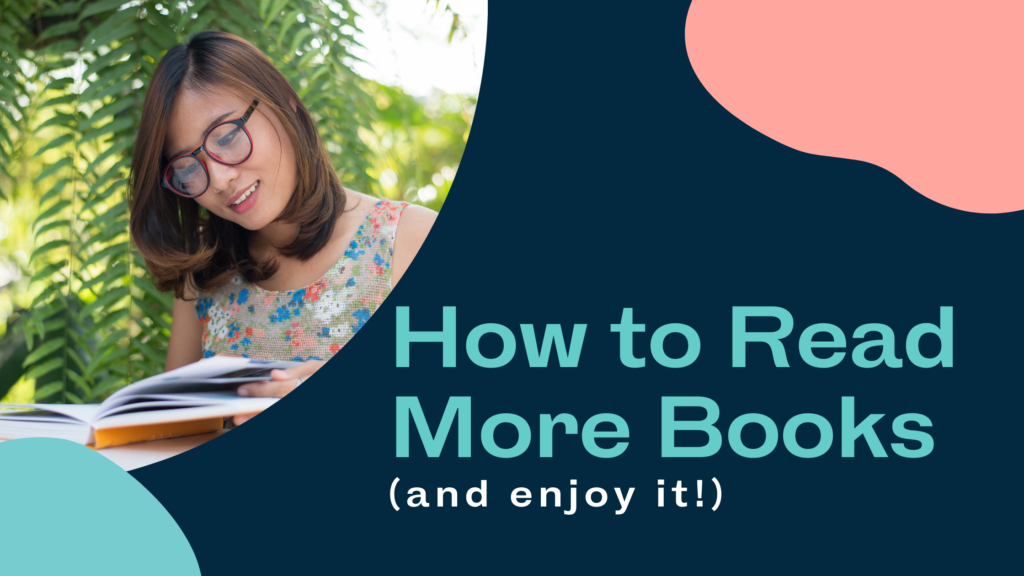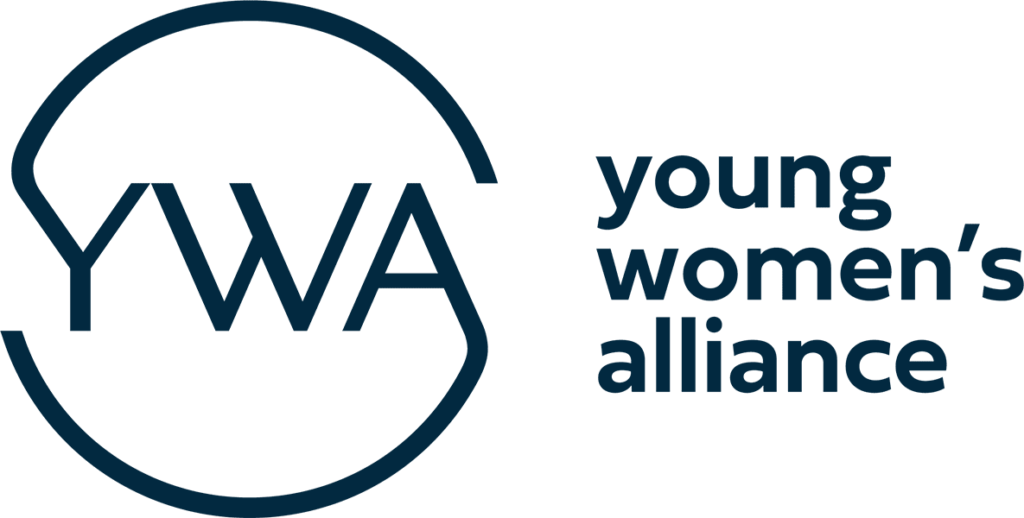

By YWA member Rebecca Bennett
When people ask me how I read so many books, the answer—on the surface—is simple. I can read 50-plus books in a year because I love to read. Reading is an activity that I look forward to every single day, but I truly believe everyone could fall in love with reading if only they discover the books that excite them. To reclaim the joy in reading, we must unlearn the values that were instilled in us about which books are deemed worthwhile or important.
The first step to reading more books is to read fewer books that we don’t enjoy. For years, as a perfectionist, I struggled with abandoning a book that I’d already invested time into reading. I approached each book as a project to complete. For example, several years ago at the height of the Hamilton craze, I tried to read the dense Ron Chernow biography that the musical is based off of. I felt like I had somehow let playwright Lin-Manuel Miranda down when I found the book to be terribly boring. But you’re not a disappointment if you quit a book; that book was a disappointment to you. You’ll read more books if you choose titles that you can’t wait to dive back into as opposed to slogging through one that feels like a chore.
We also need to expand our understanding of what counts as reading. Audiobooks are not cheating. They are one of the most inclusive forms of media because they are accessible to people with visual impairments, like dyslexia. They have the added benefit of high production value—with entire casts performing as different characters, as in Daisy Jones and the Six or The Guest List. You can also enjoy some of your favorite celebrities bringing their quirky Hollywood charm to their memoirs, like Matthew McConaughey does in Greenlights. Some books feel like they were meant to be read aloud, like listening to Jason Reynolds in Long Way Down rhythmically deliver, in verse, the tale of gun violence on the streets of Baltimore.
From audiobooks, we discover regional accents and dialects, pronunciation of new vocabulary, and nuances in tone. Research shows that we’re more likely to get the gist of content that we hear for the first time, as opposed to that we read for the first time because our brains are wired to know we cannot easily backtrack in auditory learning. Ultimately, with reading, it’s about the final destination and not the vehicle you use to get there.
We also have to stop selling ourselves short for reading fiction. Fiction matters. Too often, I have friends tell me they wish they could read more, but they continually pick up self-help manuals, business guides, anything that approaches reading as a means to an end as opposed to a pleasure.
In fact, fiction can be as beneficial—if not more so—than reading nonfiction. R readers of fiction tested higher than readers of nonfiction on social cognition tests, meaning they demonstrated greater empathy. And when we read passages that contain mental content, which explores characters’ motivations, feelings, and thought processes, that reading activates the network in our brains we use to imagine hypothetical situations and how we might react to them.
But my favorite aspect of fiction is that it’s an entrypoint into diversifying your bookshelf, regardless of what genres of books you love. No single genre is inherently lesser than or greater than others. Science-fiction, thrillers, romance, or young adult fiction can all be an opportunity for you to increase representation of different voices in your reading. Last summer, anti-racist reading lists circulated the internet. Although the intention of those recommendations was solid, often those dense books of history and politics are not approachable for people who aren’t already avid readers. With stories as the foundation of human culture, what more engaging and creative way to learn about the perspective of someone different from you than through a story?
If you wanted to, for example, learn more about the motivations behind and the passion for the Black Lives Matter movement, you could read The Hate U Give to get inside the heart and mind of a young Black girl who witnesses a white cop shoot her friend. The #OwnVoices movement in book publishing continues to gain momentum as authors from marginalized groups advocate for and commit to writing stories with characters from those marginalized groups.
If you’re wondering how you find these horizon-broadening books, reading doesn’t have to be solitary. Build a circle of readers around you with whom you can exchange recommendations and opinions. Of course, joining a book club in person, like the YWA Book Club, is a wonderful way to connect with other readers and have the added motivation of a conversation after you finish a book.
The online book influencer community produces quality content in podcasts, blog posts, and Instagram accounts. As authors are eager to share stories that reflect their unique identities, readers of every stripe are hungry for those stories and willing to amplify them online. This robust, diverse community can supplement any weaknesses in your personal circle. If you recognize that your friend group isn’t as diverse as it should be, you can seek out individuals of those identities online and learn about books you wouldn’t otherwise hear about.
As you start to accrue these recommendations, it’s critical to keep a record of books that you want to read. Keeping a list helps you maintain momentum; you don’t want to come to a complete stop in between books and lose interest. I love Goodreads as a platform for keeping track of both the books that I’ve read and books that I want to read, whether I hear about them from a friend or see an interesting title at my favorite local independent bookstore (shoutout to BookPeople!).
Goodreads also has a nifty built-in Reading Challenge feature, to publicly commit to yourself and to your peers your renewed dedication to reading. Like any goal, you want to be realistic and not set yourself up for failure. If you read the American average of one book per month, you can stretch to reading two books per month, which is a significant achievement.
After you’ve acquired some of the books you can’t wait to read, always have a book—or several with you. Several books because, like your television-watching habits or your music-listening habits, you won’t be in the same mood for the same book, day in and day out. I like to read multiple books simultaneously so that I can rotate between them to suit my current mood.
The beauty of digital reading is the convenience of carrying a literal library with you in your pocket or purse. Not only do e-books give you the freedom of choice, but they also allow you to reclaim little pockets of time throughout the day when you didn’t realize that you could be reading. Within the past week alone, I’ve used my phone to dive back into a book while I got a pedicure, while I waited for a doctor’s appointment, and while I waited to pick up my groceries.
Audiobooks are ideal for our busy lives because they’re so conducive to multitasking. I love how an audiobook can elevate the most mundane tasks like commuting, cooking, and cleaning into activities I truly look forward to.
That said, if you want to create a habit-forming goal of reading for a set amount of time every day, you must unplug. Your phone is your worst enemy when it comes to focused reading. Put your phone in another room. You can train yourself to read in sprints, starting with 15 or 20 minutes and working your way up to an entire hour of sustained reading. You can use tools like the Forest app to reward you for not looking at your phone for a set amount of time.
I also recommend that if you read on a Kindle or tablet, you turn on Airplane Mode even when sitting at home. Not only does this mode get rid of distracting notifications, but it also removes the temptation to use the built-in search features. When I read, I turn into a researcher, wanting to look up maps of settings or learn more about referenced historical events. I have to remind myself that it’s okay to not know everything at once. In an age when you can Google whatever you want, whenever you want, we must relearn this skill.
You have to open yourself up to a childlike sense of wonder and trust that the author will reveal the information that you need in due time. Staying curious is the mindset that keeps reading engaging and exciting. Staying curious applies to the type of books you choose to read: read books that seem like they weren’t written for you, books by unpopular authors, books with unappealing covers.
The best type of reading never feels like an obligation or requirement. It feels natural, meditative, immersive, fun. By shedding some of the stigmas about what books that are too frequently dismissed as “fluffy” or “guilty pleasures,” you’ll rediscover the joy of reading, book after book after book.
This blog was adapted from a YWA TedTalk, one of our Speaker Series features. To find out more about Speaker Series, book club, and other great member activities, check our Membership Benefits page and become a member! Already a YWA member? Watch your emails, and check the InfoHub event calendar to register for upcoming events.
